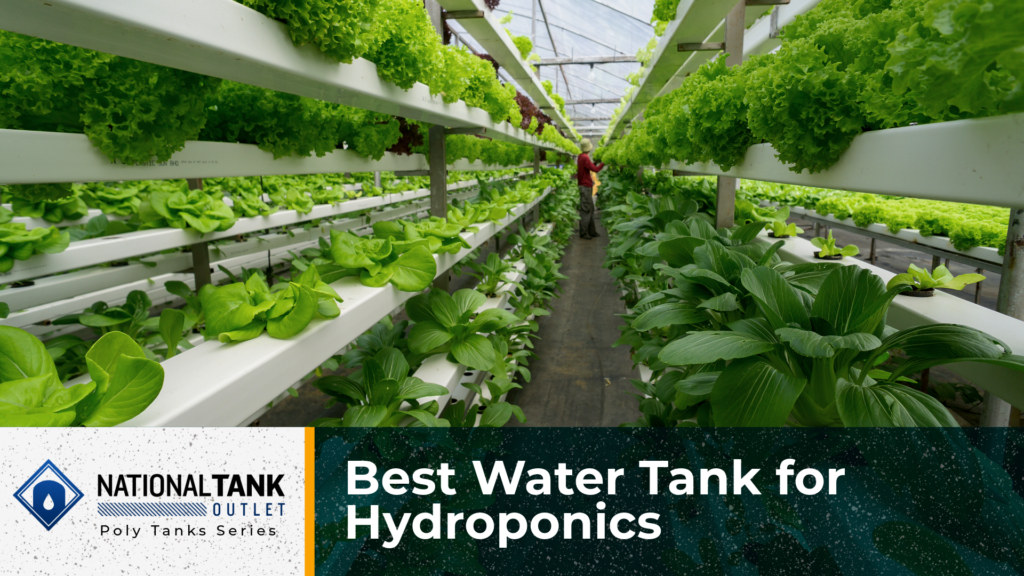
What is Hydroponics?
Hydroponics is an innovative method of gardening that eliminates the need for soil. Instead, plants grow in water infused with essential nutrients that allow them to grow and thrive. The hydroponics growing method provides greater control over the plant’s environment and enables gardeners to grow crops faster and with fewer resources than traditional soil-based gardening.
Why Water is the Lifeblood of Hydroponics
Water isn’t just a medium in hydroponics — it’s the heart of the entire system. It carries the essential nutrients plants need to grow, keeps roots hydrated, and provides oxygen. The quality and consistency of the water directly impact the health and productivity of the plants. Without a reliable source of clean water, even the most carefully designed hydroponic setup can falter.
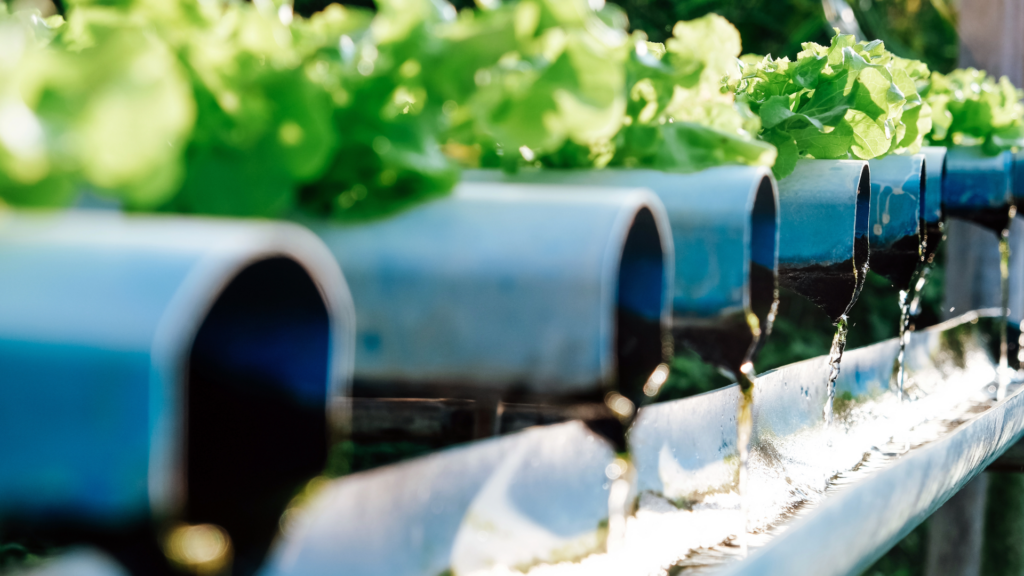
Why Choosing the Right Water Tank Matters
A water tank is often one of the key components of any hydroponic system. Water tanks can store and deliver water and the nutrient-rich solution plants depend on. The right tank will store enough water for the system and ensure it stays clean, kept at a stable temperature, and remains free from contaminants.
The right water tank will help maintain the performance and sustainability of your system, whether you’re tending a small home garden or managing a large commercial farm. Selecting the best water tank for hydroponics will be tailored to your specific needs and can make all the difference in achieving a lush, bountiful harvest.
Importance of Water Tanks in Hydroponics
The Role of Water Tanks in Hydroponic Systems
Water tanks are the backbone of any hydroponic setup. They serve as the primary storage unit for the nutrient-rich solution that keeps your plants thriving or the circulating water that the solution is added to. Instead of relying on natural soil to deliver nutrients, hydroponic grow systems depend on this custom-made liquid solution housed in the tank. This ensures that essential minerals like nitrogen, potassium, and phosphorus are readily available for plant uptake and growth.
Beyond storage, water tanks play a role in distributing water and nutrients throughout the system. Pumps draw water from the tank, circulating it to the plants’ roots in a precise and efficient manner. This continuous flow is critical for maintaining an even supply of nutrients, oxygen, and hydration – all vital for plant growth. The right tank not only stores hydroponic liquids but also supports the overall structure and success of your hydroponic setup.
Supporting Healthy Plant Growth Through Water Quality and Consistency
A healthy hydroponic system depends heavily on the consistent quality and volume of the available water, and the right water tank plays a significant role in achieving both. The materials and design of a tank can directly influence water purity and help to prevent contamination from bad situations or even harmful substances. For example, durable, non-reactive materials like food grade plastic or stainless steel ensure that the water tank’s contents remain free of chemicals or residues that could harm plants or end up in the crops to be eaten by people.
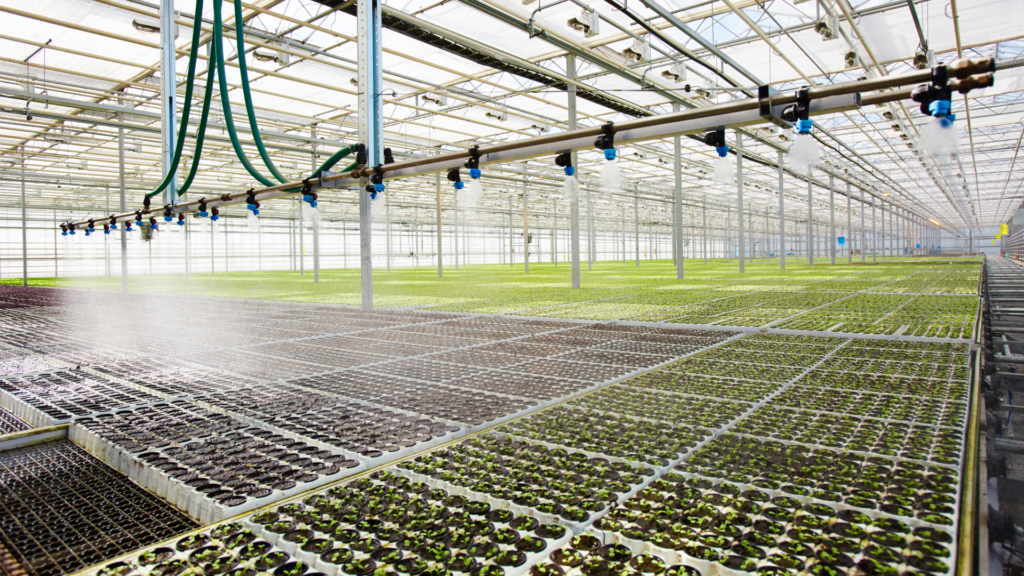
Consistency is another critical factor. Plants in a hydroponic setup rely on a uniform, calculated supply of nutrients and oxygen at all times. A well-designed water tank and hydroponic system help regulate these factors by maintaining a stable environment and providing reliable performance. Features like UV resistance, dark colors, and thick walls work together to protect against algae growth and water degradation caused by sunlight exposure, while insulated or temperature-stable tanks prevent fluctuations that might stress plants.
By choosing a high quality water tank tailored to your hydroponic needs and work environment, you create a reliable foundation for plant health. The result is stronger growth, better yields, and an overall more effective hydroponic system.
Linking Tank Efficiency to System Sustainability
An efficient water tank goes beyond ensuring plant health — it also contributes to making your hydroponic system more sustainable. The right tank minimizes water waste by keeping the nutrient solution contained and preventing unnecessary evaporation. This is especially important in water-scarce areas or for growers who aim to reduce their environmental impact.
Additionally, efficient tanks consume less energy. By maintaining consistent water temperatures and reducing the risk of leaks or overflows, they require fewer interventions like excessive heating, cooling, or pumping. This not only lowers energy consumption but also reduces operating costs over time, making hydroponics more practical and eco-friendly for both home gardeners and commercial operations.
Choosing a water tank that is built to last also adds to sustainability. Durable materials with a long lifespan reduce the need for frequent replacements, cutting down on waste and resource use. By prioritizing efficiency and durability in your choice of water tank, you not only improve the performance of your hydroponic system but also support a more responsible and sustainable way of growing.
Key Features to Consider When Choosing a Water Tank
Material
The material of a water tank plays a critical role in its performance and durability. Common tank material options for hydroponics include plastic, stainless steel, and fiberglass, each with its pros and cons.
- Plastic water tanks are lightweight, affordable, and resistant to rust, making them a popular choice. Food grade plastic and ANSI/NSF 61 certified tanks ensure the water remains safe for plants and eventual human consumption. While they indeed have a long service life, they may not be as lasting as other materials over the long term.
- Stainless steel water tanks are highly durable and resistant to corrosion, damage, and weakening, ensuring long lasting use. Its non-reactive surface keeps the water pure, but it tends to be more expensive and heavier than plastic options.
- Fiberglass water tanks are known for their strength and resistance to weathering. They’re a good choice for outdoor setups but can be costlier upfront, often available only in larger volumes, and might require additional care to avoid cracking over time.
Choosing the right material can vary and should depend on your budget, climate, and the specific needs of your hydroponic setup.
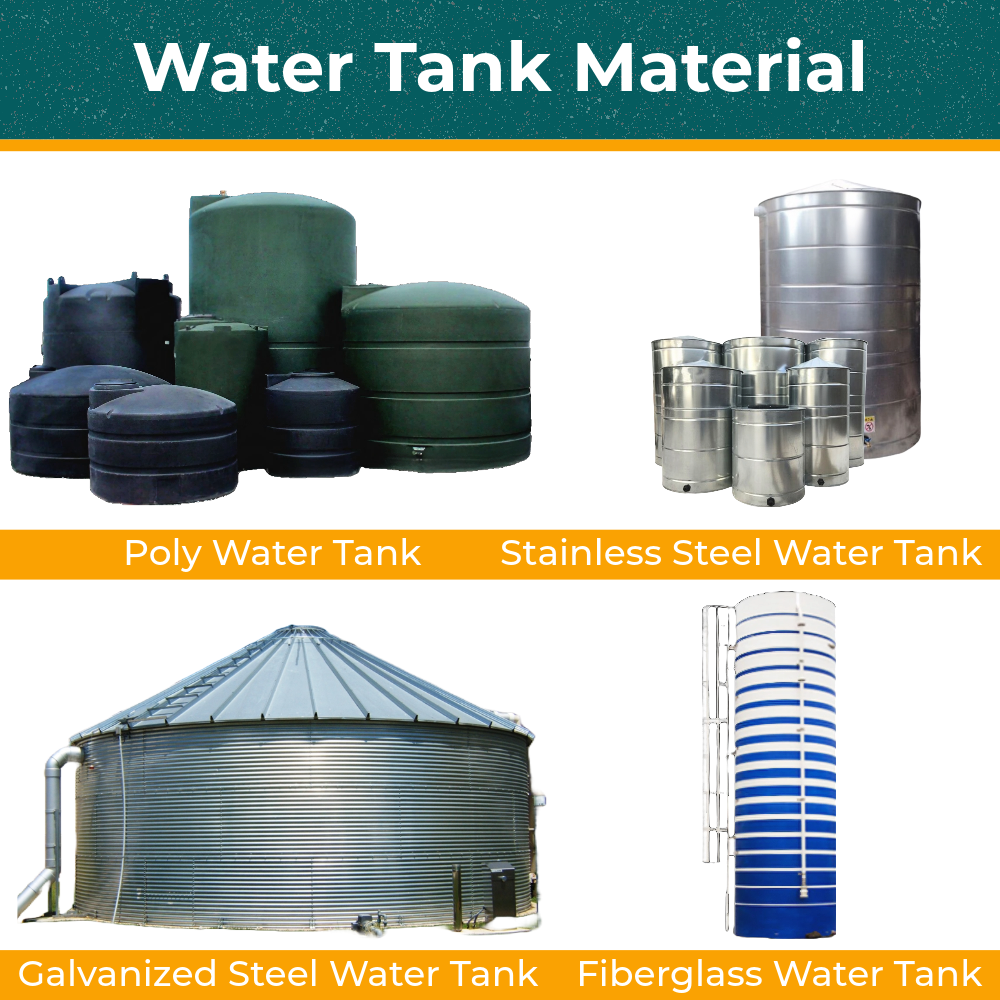
Size and Capacity
When it comes to water tanks, size matters. The capacity you choose should align with the scale and type of hydroponic system you’re running or planning.
For a small home garden, a relatively small tank may suffice. However, larger commercial systems typically require tanks with higher capacities to meet the constant demand for water and nutrients. Keep in mind that an undersized tank might lead to frequent refilling and disrupt the nutrient balance, while an oversized tank could take up unnecessary space and increase costs. Always assess your setup’s needs and plan accordingly.
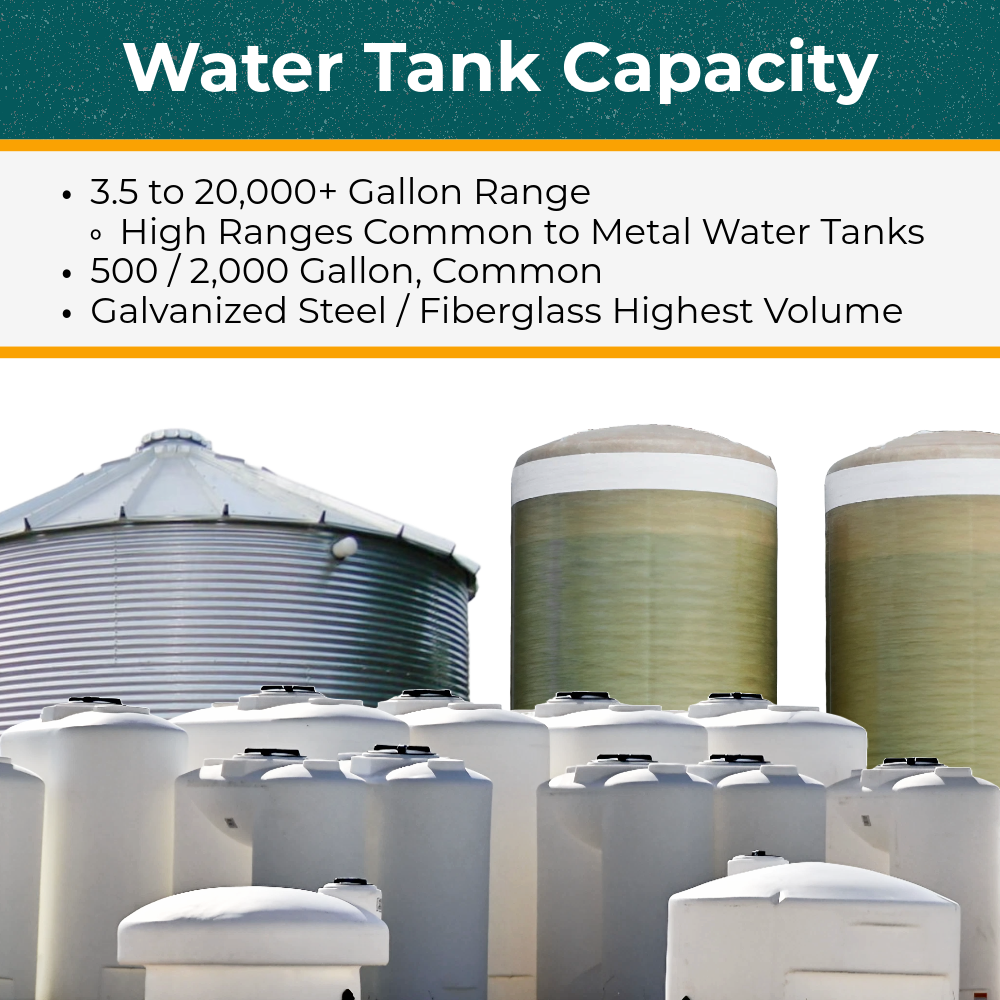
Shape and Design
Water tank shape is another important consideration as it can impact functionality and space efficiency.
- Cylindrical tanks are ideal for systems where ease of water circulation is a priority. Their curved design promotes uniform flow, making them well suited for larger setups. However, their round shape takes up more land space and can be cumbersome in the case of organization.
- Rectangular tanks can be a better fit for tighter spaces due to their flat sides and compact design. However, most rectangular tanks are either low in volume or IBC totes which often require additional protection against sunlight to prevent algae growth.
- Horizontal tanks offer a decent blend of both cylindrical and rectangular water tanks. While horizontal water tanks may need more ground space, they require less headroom, allowing them to fit in areas where other tanks may not fit.
Choosing the right shape will let you maximize functionality and make the best use of your available space.
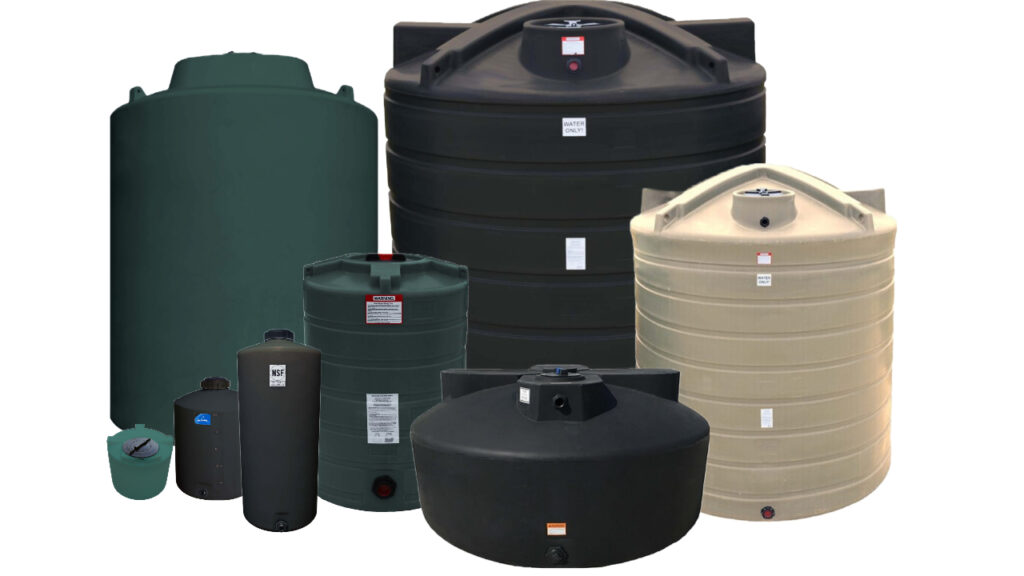
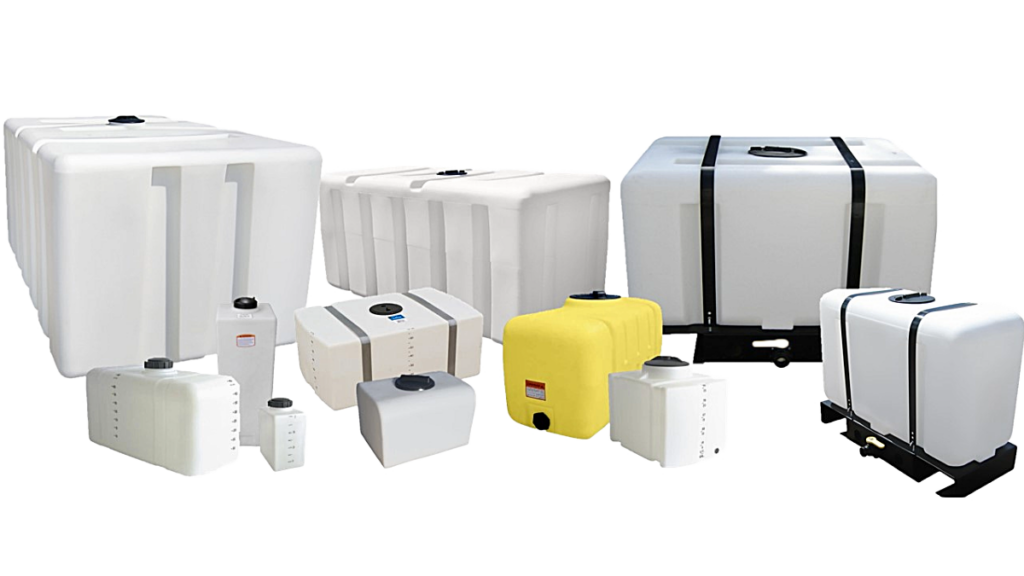
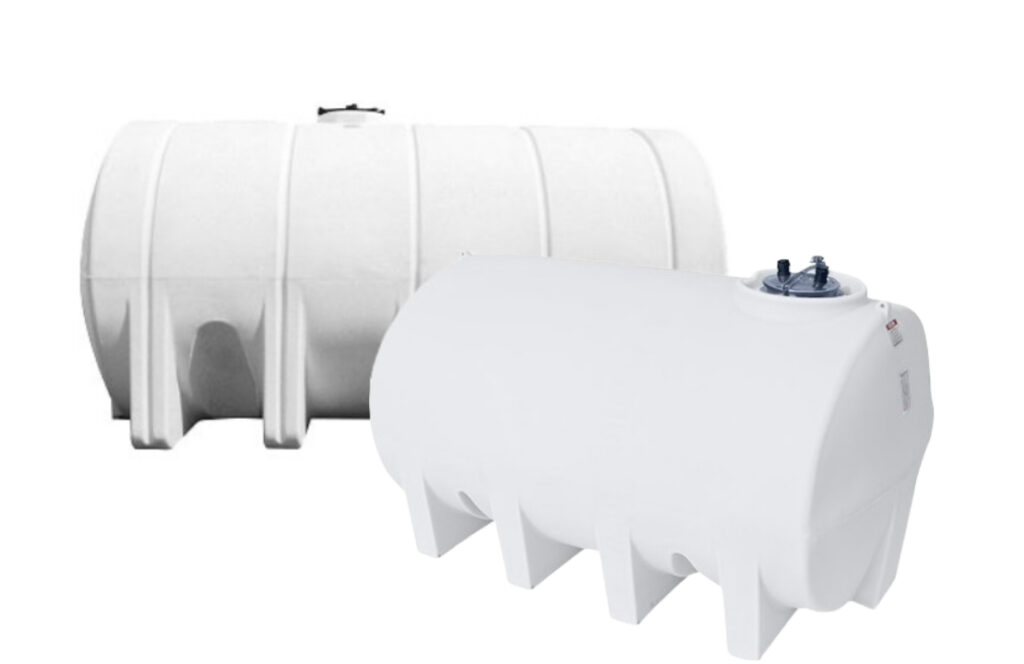
Ease of Installation and Access
Convenience should not be overlooked when selecting a water tank. Tanks that are easy to install will save you time and effort during setup. Additionally, consider tanks that offer easy access for maintenance tasks such as cleaning, monitoring water quality, and adding solutions for adjustments. Features like wide openings, detachable lids, and built-in spigots can make a world of difference in managing and running your hydroponic system.
UV Resistance
For outdoor hydroponic systems, sunlight blocking and UV resistance is non-negotiable. Water tanks exposed to sunlight can develop algae, which diminishes water quality by removing nutrients and hampers plant growth. An opaque, dark colored tank can keep sunlight from reaching the stored water and effectively prevent algae growth.
Plastic water tanks, if not specifically manufactured with UV stabilizers, can degrade over years of sun exposure leading to brittleness and weakening. A UV resistant tank helps protect the structural integrity of the tank to offer many years of use.
Over time, both points lead to better water quality and reduce the need for frequent cleaning, saving you both time and money.
Cost and Budget
While cost is always an important factor, it’s essential to balance initial affordability with long term value. Cheaper tanks might save money upfront, but they could cost more in the long run if they’re prone to leaks, wear, or inefficiency through extra work or cleaning. Investing in a high quality tank that suits your needs may feel like a bigger expense initially, but it will undoubtedly pay off through its durability, water quality, and better overall performance.
By carefully considering the key features outlined above — material, size, shape, ease of installation, UV resistance, and cost — you’ll be well-equipped to choose a water tank that contributes to the success of your hydroponic system.
Best Water Tank Recommendations
1. Ace Roto-Mold 55 Gallon Compact Water Tank
The Ace Roto-Mold 55 Gallon Compact Water Tank is perfect for small to medium hydroponic systems such as for DIY hobbyists. Built from durable, food grade plastic, it ensures water and the nutrient solution remain safe and uncontaminated. Its compact, cylindrical shape makes it easy to fit in limited spaces, and its UV resistant, dark colored material protects against algae growth. This tank makes a great choice for home gardeners looking for reliability without occupying too much room.
55 Gallon Black Vertical Water Storage Tank | Ace VT0055-20B
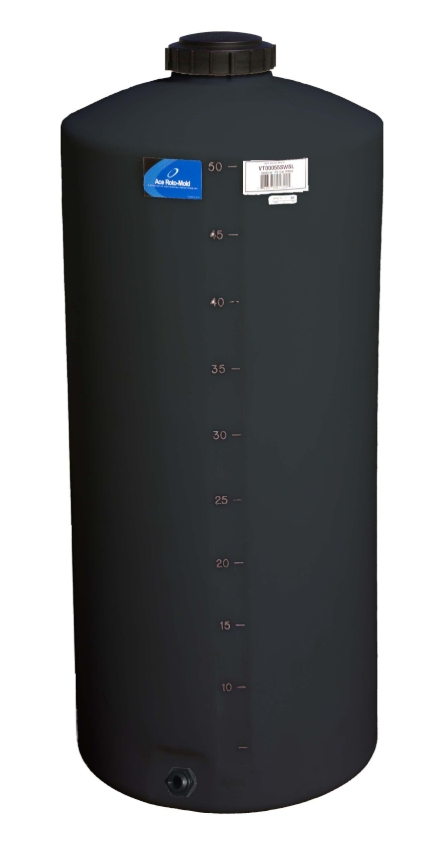
2. Bushman Slimline 130 Gallon Tank
The Bushman Slimline 130 Gallon Tank stands out for its slim, rectangular design that makes it a great space saving option for tight areas. It’s constructed from UV stabilized polyethylene to safeguard the water against sunlight-exposure effects. This tank also features easy-to-use outlets for quick integration into hydroponic systems. Its sleek design doesn’t sacrifice function, making it a favorite for urban setups.
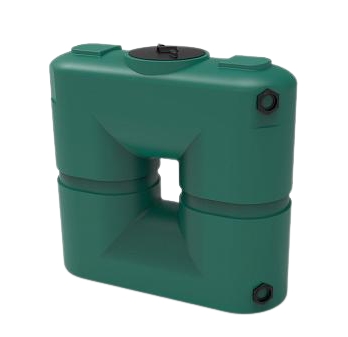
3. Norwesco 525 Gallon Horizontal Tank
With a robust horizontal design, the Norwesco 525 Gallon Horizontal Tank is ideal for larger hydroponic setups. Its higher capacity reduces the need for frequent refills, saving time and effort for commercial growers. The tank’s horizontal, low profile allows the tank to be placed in areas with low headspace. Made from polyethylene, it’s lightweight yet tough enough to withstand outdoor conditions. A tight fitting lid ensures the tank remains secure while offering easy access for maintenance.
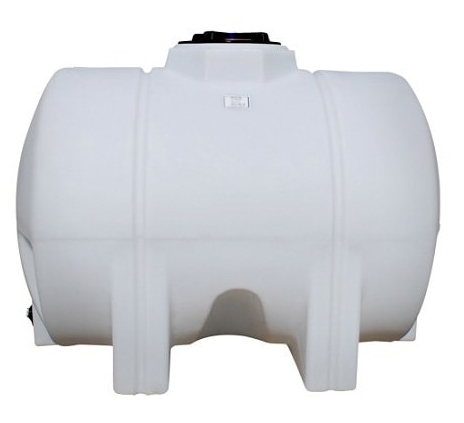
4. Texas Metal Tanks 1000 Gallon Steel Water Tank
For growers seeking durability and long term value, the Texas Metal Tanks 1000 Gallon Steel Water Tank is a top contender. Made of stainless steel, it offers unmatched strength and resistance to damage, ensuring reliable performance year after year. This tank is especially suitable for high demand, high yield systems. While it comes at a higher price point, its longevity and capacity make it a worthwhile investment.
1000 Gallon Stainless Steel Rainwater Tank | Texas Metal Tanks RWT1000SS
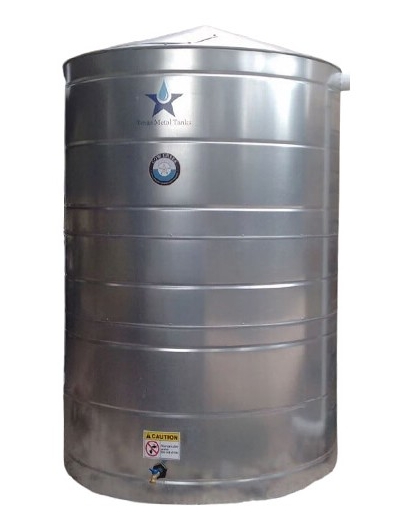
By selecting any of these top rated water tanks, you can confidently build or improve your hydroponic setup. These tank types or styles come in a wide range of sizes and potential options to meet different needs and projects.
Key Features of Recommended Water Tanks
1. Ace Roto-Mold 55 Gallon Compact Water Tank
- Material: Made of food grade plastic to ensure the hydroponic system stays safe and free from contaminants.
- Size Range: 55 gallon capacity makes it an excellent choice for small hydroponic setups.
- Durability: Constructed to resist wear, with dark colors and UV resistant properties that help prevent algae formation.
- Price: Affordable and ideal for home gardeners working within a budget.
2. Bushman Slimline 130 Gallon Tank
- Material: UV stabilized polyethylene keeps the tank and water safe from sunlight damage and contaminants.
- Size Range: Slim, space saving design with a 130 gallon capacity for urban and space restricted setups.
- Durability: Excellent for tight spaces, its sturdy construction ensures lasting performance even in demanding environments.
- Price: Moderately priced, offering a practical solution for growers who have specialized needs.
3. Norwesco 525 Gallon Horizontal Tank
- Material: Built from lightweight yet durable polyethylene capable of handling outdoor conditions.
- Size Range: At 525 gallons, it’s a superb choice for medium to large hydroponic systems.
- Durability: Its robust design includes free standing legs and lower vertical height.
- Price: Offers a balance of high capacity and cost effectiveness, making it more appealing to commercial growers.
4. Texas Metal Tanks 1000 Gallon Steel Water Storage Tank
- Material: Made from stainless steel and designed for unmatched longevity and overall strength.
- Size Range: With a 1000 gallon capacity, it’s perfect for large scale, high demand hydroponic systems.
- Durability: Its rugged build and wide openings for easy cleaning make it a great long term investment.
- Price: Though on the higher price end, the durability and capacity make it cost effective over time.
By breaking down these key features, you can better determine which tank aligns with your hydroponic goals, whether it’s a space saving design, high capacity, low cost, or more durable materials.
Matching Tanks to Hydroponic Setups
For Home Hydroponic Systems
If you’re managing or planning for a small scale or home based hydroponic system, options like the Ace Roto-Mold 55 Gallon Compact Water Tank make a good choice. Its compact size and affordability are ideal for hobbyists or those with limited space. The 100 gallon capacity provides enough water for a modest setup without requiring constant refills and allows establishing a sizeable nutrient stock. Similarly, the Bushman Slimline 130 Gallon Tank is a great choice for urban gardeners. Its slim design fits neatly along walls or in tight spaces, making it an ideal solution for patios or smaller backyards with hydroponic units.
For Commercial Farms
Larger hydroponic setups, such as commercial farms, private growers, or greenhouses, often require higher capacity tanks to keep up with water and nutrient requirements. The Norwesco 525 Gallon Horizontal Tank offers plenty of storage while maintaining a reliable and durable build for outdoor or large scale use. Its horizontal design provides stability, even when dealing with continuously moving water.
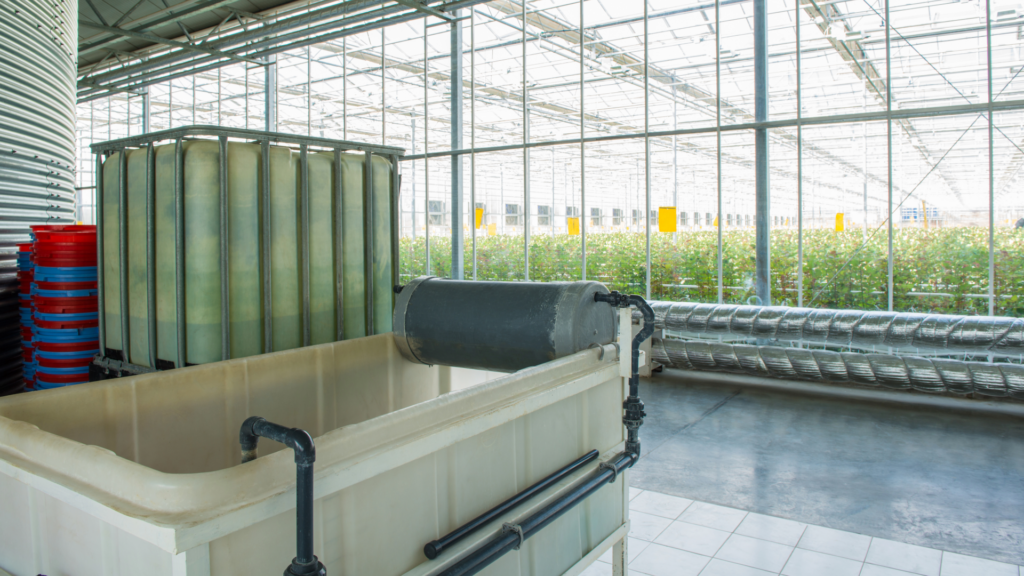
For even larger operations, a Norwesco 2100 Gallon Poly Tank or the 5000 Gallon Stainless Steel Water Tank can provide a powerful solution. With its steel construction, this tank can withstand the wear and tear of constant use and outdoor exposure. It’s a reliable choice for high demand systems planned for years of use, ensuring that plants always have access to a steady water supply.
Tailored Choices for Specialized Needs
Each tank’s unique size and features make it easier to match specialized setups. For example, the thin profile Bushman Slimline Tank accommodates growers aiming to make the most out of limited spaces, while the durable stainless steel tank supports farms in harsher conditions or that need long term, heavy duty equipment. Choosing the right water tank for your setup will ensure your system will run smoothly.
By understanding the specific requirements of your hydroponic system — whether it’s a home garden or commercial farm — you can select a tank that meets your needs, supports system performance, and guarantees the long term health of your plants.
Maintenance Tips for Hydroponic Water Tanks
Proper maintenance of your hydroponic water tank should be performed and regularly to ensure the health of your plants and the performance of your system. Here’s how to keep your tank in top condition.
Regular Cleaning to Prevent Algae and Bacteria
Algae, bacteria, and buildup can disrupt your system’s delicate balance. This can happen even if many precautions are taken. To avoid this, clean your tank at regular intervals.
- Empty the Tank: Start by draining the water completely.
- Use Safe Cleaning Agents: Scrub the interior with a soft bristled brush and non-toxic cleaning solutions, like vinegar or a hydrogen peroxide mix, to remove any biofilm and deposits. Rinse thoroughly to ensure no residue remains.
Maintaining a clean tank also minimizes the chance of harmful bacteria that can affect plant health.
Inspect for Leaks, Cracks, and Sediment
Over time, tanks can develop minor issues that, if left untreated, turn into major problems.
- Perform Visual Checks: Routinely inspect for signs of leaks or cracks in the tank walls, gasket seals, valves, and plumbing connections.
- Check for Sediment: Sediment can accumulate, which can come from poor quality water, and affect the quality of water used for hydroponics. If sediment is visible, clean the bottom of the tank thoroughly.
- Use a Leak Sealer: For minor leaks, apply a water-safe sealant as a quick fix. Replace the tank if cracks jeopardize durability.
Addressing these issues early will ensure your system runs efficiently and prevent costly repairs.
Maintain Proper Water pH and Nutrient Balance
The tank environment plays a central role in plant growth.
- Test Water pH: Use a pH testing kit weekly to ensure levels stay in the ideal range, usually between 5.5 and 6.5.
- Adjust as Needed: If pH levels are off, adjust with pH up or down solutions specifically made for hydroponics.
- Monitor Nutrients: Regularly check for proper nutrient levels using an EC or TDS meter. Rebalance as needed to avoid deficiencies or toxicities in your system.
Stay on top of water chemistry to improve the lifespan of both your tank and your plants.
Tips to Prolong the Lifespan of Your Tank
Investing in tank longevity will save you both time and money in the long run.
- Choose the Right Material: Start with a durable, UV resistant tank suited to your environment.
- Do Not Overfill: Overloading can increase pressure and lead to deformation or leaks over time.
- Use Protective Covers: Prevent external damage from accidents or exposure by placing covers or barriers around your tank.
- Store Wisely: If your tank isn’t in use, store it in a dry, shaded space to protect against weathering and wear.
By following these steps, you can maximize your tank’s efficiency, minimize downtime, and ensure your hydroponic system stays healthy and productive. Regular attention to maintenance keeps your hydroponic garden thriving and your tank performing at its best.
Takeaway
Choosing the best water tank for your hydroponic system is more than just a technical decision — it’s a vital step in creating a thriving, effective setup. By understanding the importance of material, size, shape, durability, and cost, you can ensure your tank supports both the practical needs of your system and the health of your plants.
A clean, well maintained tank will minimize problems like algae and bacteria buildup while preserving water quality through proper pH and nutrient balance. Whether you’re growing at home or managing a commercial farm, selecting a suitable tank plays a role in the success of your entire system.
Investing in a high quality water tank ensures not only the health of your plants but also the long term performance of your hydroponic garden. Explore the wide selection of water tank options we offer and make a choice that best fits your setup, goals, and budget. A well made tank is the foundation of a bountiful hydroponic garden — start your search today and set your system up for lasting success.